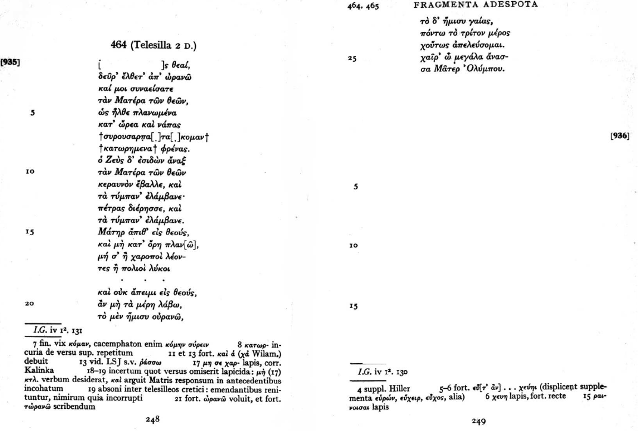1. Parthenion about the love of Artemis and the river Alpheus, which was composed to be performed by a choir of virgins.
ἁ δ᾽ Ἁρτεμις, ὦ κόραι,
φεύγοισα τὸν Ἀλφεόν…
Hephaestion; Enchiridion, 11, 2.
Translation to Spanish:
Ártemis, chicas,
huyendo de Alfeo…
Translation to English:
Artemis, girls,
fleeing from Alpheus...
https://es.wikipedia.org/wiki/Telesila
2. Combat between Hera and Zeus (fragment)
[…] diosas
venid aquí desde el cielo
y conmigo cantad
a la Madre de los dioses
cuando llega errante
por montes y valles
[…] la cabellera
[…] la mente.
El soberano Zeus al ver
a la Madre de los dioses,
un rayo lanzó, y
los timbales tocaba.
las rocas quebró, y
los timbales tocaba.
“Madre, márchate con los dioses,
Y no vayas por los montes
no sea que los leones de brillantes ojos
o los blancos lobos
[…]”
“Y no me voy con los dioses,
Si no obtengo mis partes,
la mitad del cielo,
la mitad de la tierra,
y del mar la tercera parte.
y de este modo me marcharé”.
¡Salve, o gran soberana,
Madre de los dioses!

https://pdfslide.tips/documents/poema-de-telesila-de-argos.html